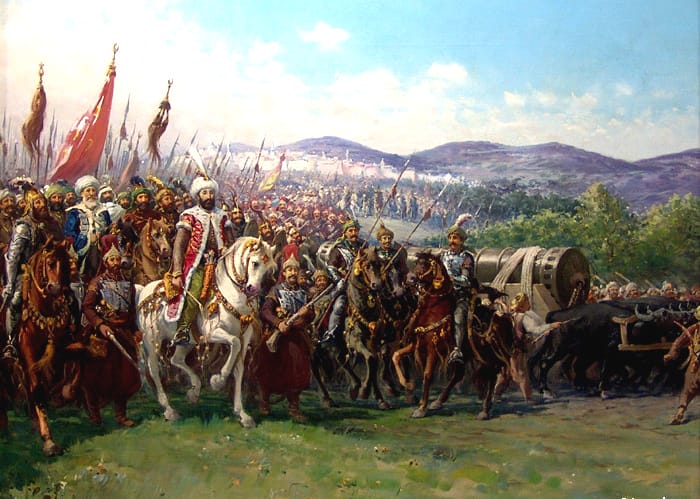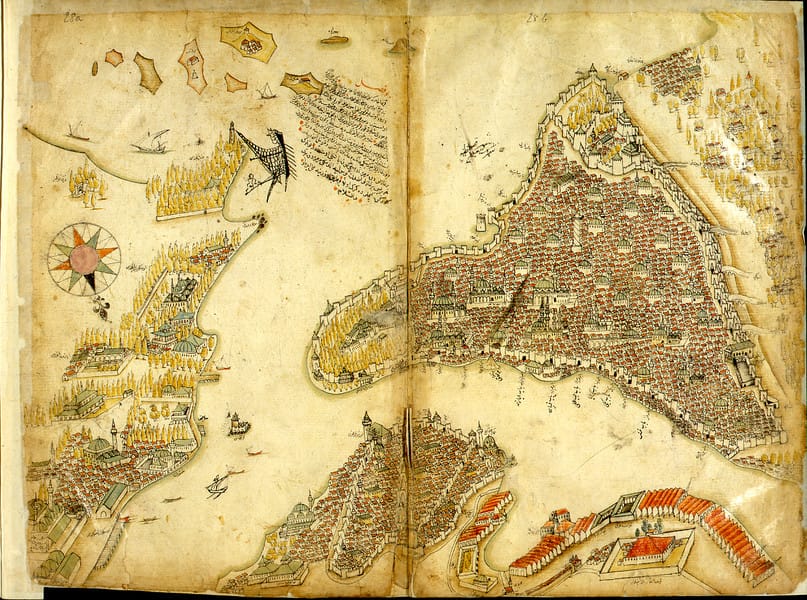Episode 23 of “Mehmed: The Conqueror of Conquests” and Historical Facts About the Şahi Cannon
The Historical Legacy of the Şahi Cannon in the Siege of Constantinople

Episode 23 of “Mehmed: The Conqueror of Conquests” and Historical Facts About the Şahi Cannon
Episode 23 of the series “Mehmed: The Conqueror of Conquests“ has sparked significant controversy among history enthusiasts, particularly due to the final scene featuring the Şahi cannon, Sultan Mehmed II’s most powerful weapon during the siege of Constantinople. Many viewers have pointed out that the depiction of the cannon in the episode is historically inaccurate, leading to widespread dissatisfaction and criticism.

Historical Background of the Şahi Cannon
The Şahi cannon, also known as the “Great Cannon,” was a monumental piece of artillery designed by the Hungarian engineer Urban, who offered his expertise to Sultan Mehmed II. Weighing approximately 16 tons and capable of firing projectiles up to 600 kilograms, the cannon represented a revolutionary technological achievement for its time.
Historical records reveal that the Şahi cannon was fired multiple times, causing significant damage to Constantinople’s defensive walls before it ultimately exploded. Its powerful blasts struck fear into the defenders of the city, and although its destruction was a setback, its earlier performance played a critical role in breaching the city’s walls, leading to its eventual fall.
How It Was Portrayed in the Series
In the series, the Şahi cannon is shown as barely functioning and failing to cause substantial damage to the city walls before exploding. This portrayal has disappointed viewers familiar with the historical events, as it diminishes the technical brilliance and the immense effort invested in creating this formidable weapon. It also undermines the crucial role the cannon played during the siege.
Historical Facts About the Şahi Cannon’s Explosion
The first Şahi cannon did indeed explode due to overheating and excessive use, but not before firing numerous projectiles. Its impact on the walls of Constantinople was significant, even terrifying Emperor Constantine XI and his defenders. Despite the loss of the cannon, the Ottoman forces continued to use smaller artillery pieces, combining them with strategic brilliance to secure victory.

What’s Next in the Series?
While viewers have expressed dissatisfaction with the artistic liberties taken in portraying key historical events, there is hope that upcoming episodes will better align with historical accuracy, particularly in depicting the final stages of the siege. Future episodes could explore:
- Sultan Mehmed II’s strategies after the Şahi cannon’s explosion.
- The heroic resistance of Constantinople’s defenders and their final attempts to protect the city.
- The ultimate fall of Constantinople and its far-reaching impact on world history.
Conclusion
While artistic interpretations in historical dramas often draw criticism, it is essential to remember that the siege of Constantinople was a complex event in which the Şahi cannon played a pivotal role. Despite the creative liberties taken in the series, the historical facts speak volumes about the power, significance, and contribution of this groundbreaking weapon to one of the most important events of the medieval era.





